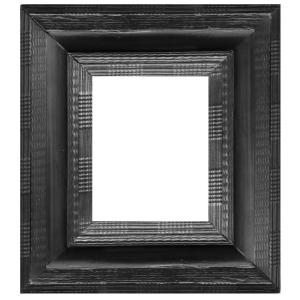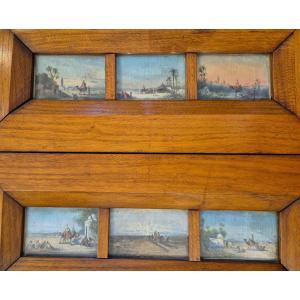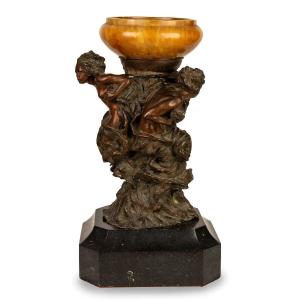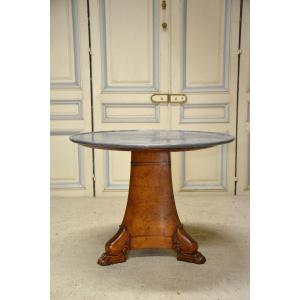Known as ‘turtle stone’ because of its turtle shell-like colours and patterns, Septarian Nodule is an ancient marble, formed in the Cretaceous period, 50-70 million years ago. The stone was created when balls of mud dried out and cracked, and the gaps created were filled with Calcite crystals (made up of crushed seashells). The striking yellow colour of the stone is the Calcite, the brown lines Aragonite and the grey is Limestone. Septarian Nodule marble first began to be cut, polished and inset into furniture and decorative art after it was discovered in Oxfordshire, in England.























 Le Magazine de PROANTIC
Le Magazine de PROANTIC TRÉSORS Magazine
TRÉSORS Magazine Rivista Artiquariato
Rivista Artiquariato
